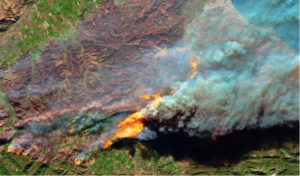
By Simeonn @ Shutterstock.com
Investors who purchased catastrophe bonds from PG&E now have the fate of their investments lying in the hands of investigators searching for the cause of the Camp Fire in California. If PG&E is found to be at fault for the fire, those investors are likely to lose everything. Markets will surely have to reevaluate the risk posed by such catastrophe bonds, and adjust yields demanded accordingly. Nicole Friedman reports on the bonds in The Wall Street Journal, writing:
Those who follow the catastrophe-bond market are already anticipating the worst. The PG&E wildfire bond was quoted at 5 cents on the dollar this week, according to FactSet, down 95% from the price quoted in mid-November.
“The bad thing for investors in that bond is that you don’t know how much time it takes for [investigators] to really determine the cause of the fire, so until then the market is in limbo,” said Dirk Schmelzer, partner and senior portfolio manager at Plenum Investments Ltd. in Zurich. Plenum, which manages $430 million in catastrophe bonds, told investors last month that it would mark down its main fund by 2% due to an expected loss on the PG&E catastrophe bond.
Large investors have piled into catastrophe bonds in recent years as they seek diversification and higher returns. The benefit to bondholders is that they collect interest payments. The risk is that they can lose their principal if certain events occur, like hurricane winds above a certain speed or damages that exceed a certain dollar threshold.
There are now about $30 billion of these securities outstanding, according to data provider Artemis, accounting for roughly one-third of all insurance-linked securities. About $4.6 billion in outstanding catastrophe bonds have potential exposure to California wildfire risk, according to reinsurance broker Aon Securities.
The Camp Fire poses new dangers to these investors because it caused more destruction than any previous blaze in the state’s history. It is expected to cost the insurance industry a total of $7.5 billion to $10 billion, according to catastrophe modeler Risk Management Solutions Inc.
Read more here.
